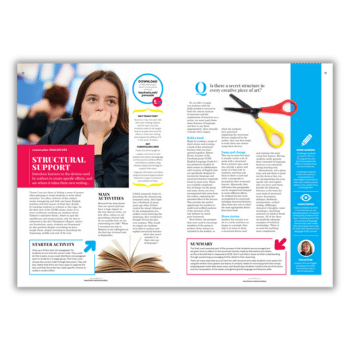Introduce learners to the structures used by authors to create specific effects, and see where it takes their own creative writing...
I know I am not alone in feeling a sense of unease when planning to teach students to write about structure. Too often, delivery of this subject seems uninspiring and dull.
Many English teachers still feel unsure of what they should be teaching students in relation to this topic. To our frustration, many students are also flummoxed by this question, despite everything we have taught them. They simply revert to describing the ‘beginning, middle and end’ of the text.
Why teach about creative writing structure?
Structure may not seem like the most riveting subject, but for exam success students need to be taught how to employ structure for effect in their own creative writing and analyse the effects of it in the work of others.
Key curriculum links
Pupils should be taught to:
- Explain, comment on and analyse how writers use language and structure to achieve effects and influence readers, using relevant subject terminology to support their views
- Organise information and ideas, using structural and grammatical features to support coherence and cohesion of texts
Starter activity
Chop up a fiction text into paragraphs for students to sort into the correct order. They could do this in pairs, or you could distribute one paragraph each to students in a larger group. Then they must choose the correct order through discussion.
They will also realise that there are many ways to organise the text, and that the writer has made specific choices to create a certain effect.
Lindsey Till is an English Consultant for ACET Community trust in North Derbyshire. Take a look at our Year 8 English worksheets. Browse KS3 creative writing resources for teaching plot and setting.














